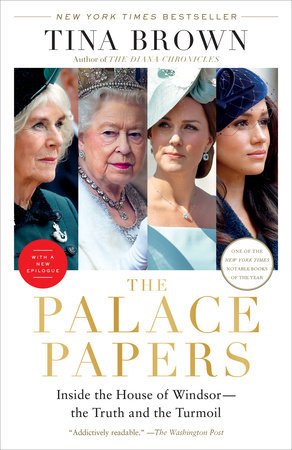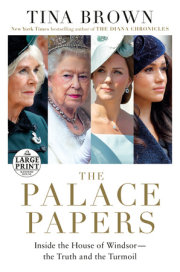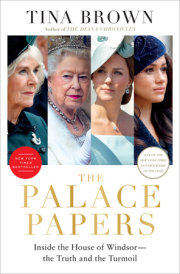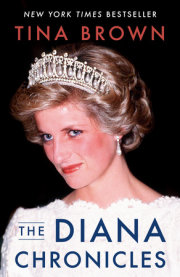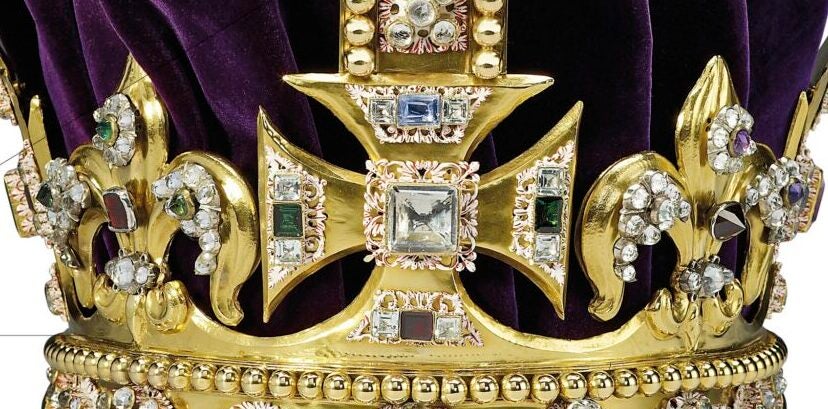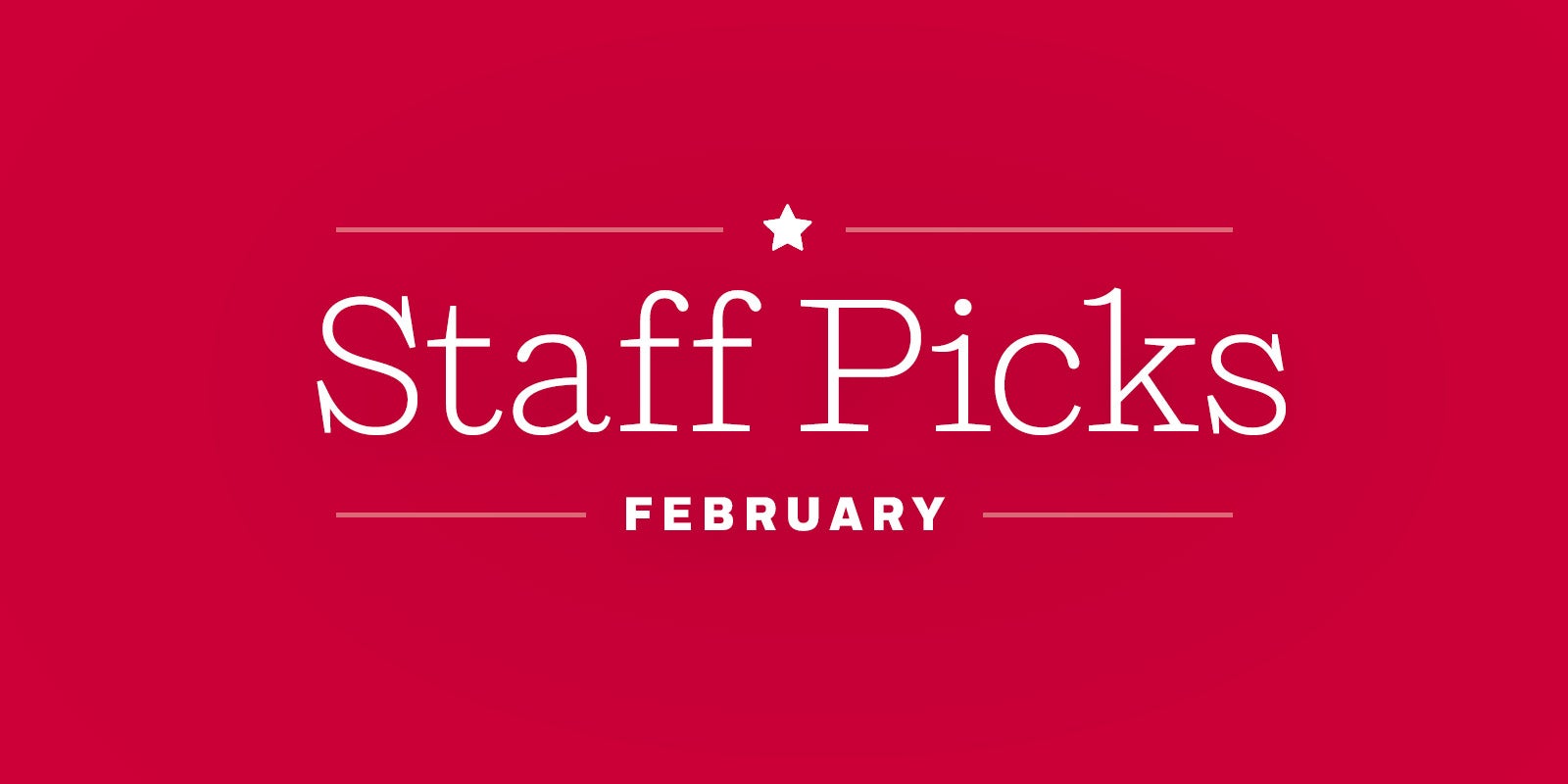Prologue
KryptoniteThe Oprah Winfrey interview with Prince Harry and Meghan, Duke and Duchess of Sussex, in March 2021 was one of the most ballyhooed in television history. It was recorded one year after their bolt for the royal exit in the palmy gardens of an undisclosed mansion in Montecito, their California Elba perched high above the Pacific coast. Oprah’s outsized glasses magnified her wonder at the couple’s nuclear revelations about the House of Windsor.
“Were you silent or were you
silenced?” the TV oracle demanded in her most commanding tone over the ominous soundtrack in the teaser to the two-hour special. The camera panned to Meghan’s narrowed eyes, then cut off before we could learn her response. Forty-nine million people globally tuned in to find out. The Duchess wore smoky, tragedy eye makeup, first deployed by Diana, Princess of Wales, in her notorious interview with Martin Bashir, and her hair was in a low bun for confessional gravitas. There was much parsing amongst Meghan fans of the white lotus detail (resurrection!) on the long black Giorgio Armani dress belted high over her baby bump.
Royal code breakers noted that on Meghan’s left wrist was her late mother-in-law’s Cartier diamond tennis bracelet, signifying that the mantle of wronged royal woman was now hers. Harry, for his part, was lambasted on Twitter for the sartorial fail of his disconsolately saggy socks and undistinguished J.Crew suit. The main theme of his complaint was that his dad, the Prince of Wales, had misread his statement about seeking financial independence and cut off his money.
A damning charge sheet was presented by the House of Sussex: institutional disregard of Meghan’s mental health; the Palace’s inaction at her character assassination by the press; family jealousy; and, most serious of all, the explosive charge of racism against an unnamed Royal Family member who had raised “concerns” about how dark-skinned the unborn Archie could be.
It was kryptonite.
Prince William’s terse response several days later to press trailing him on an engagement was: “We are very much not a racist family.” But how would he know? Meghan Markle is the first person of color to marry a Mountbatten-Windsor, and the diversity percentage amongst Buckingham Palace employees is 8.5 percent.
The social media maelstrom immediately showed a heated transatlantic divide in the audience reaction. Americans who have never forgiven the Windsors for their rejection of Diana mostly cheered the Sussexes for blowing the whistle on the monarchy’s whole crumbling theme-park enterprise. Against the backdrop of the Black Lives Matter movement, the racism allegation only confirmed that royal dinosaurs should no longer rule the earth. Even President Biden’s press secretary Jen Psaki weighed in, praising Meghan’s courage for airing her anxiety and depression.
The British reaction predominantly went the other way—outrage at the display of such arrant disrespect for the monarchy and an angry focus on the many disputable, unchallenged claims by the couple. There was widespread skepticism at Meghan’s assertion that she had nowhere to turn with her thoughts of suicide except the Buckingham Palace HR department—a surreal-sounding place that few people had ever heard of (and that sounded ripe for a BBC sitcom written by Ricky Gervais). Wasn’t Harry, who had himself spent years in therapy, also one of the founders of Heads Together, a royal initiative with Prince William and Kate to end the stigma around mental illness? Whatever adjustment problems Meghan experienced, they were clearly too painful for Harry to watch. On both sides of the pond, the younger generation was ardently on Team Meghan for saving her sweet, sexy husband from his crusty, clueless relations.
Less discussed were Meghan’s puzzling—and to me, fascinating—comments about her lack of preparation for royal life. “I didn’t fully understand what the job was,” she told Oprah. “What does it mean to be a working royal? What do you do? . . . As Americans especially, what you do know about the royals is what you read in fairy tales. . . . I grew up in L.A., you see celebrities all the time. This is not the same but it’s very easy, especially as an American, to go, ‘These are famous people.’ [But] this is a completely different ball game.”
Uh, yes. The notion that the countryside-rooted, duty-obsessed, tradition-bound senior members of the British Royal Family bear any resemblance at all to Hollywood celebrities is head-explodingly offtrack. Celebrities flare and burn out. The monarchy plays the long game. There is no time stamp on the public’s interest in you as long as it’s clear that your interest is the public’s. As the Queen’s grandmother Queen Mary once said to a relative, “You are a member of the British royal family. We are never tired and we all love hospitals.”
The dazzle of royalty that captivated Meghan is an optical illusion. It was hard for her to grasp that the organic lemon and elderflower dessert served at her fairy-tale Windsor Castle wedding was Alice in Wonderland’s “Eat Me” cake. Even as she became a bigger and bigger star on the global stage, she would have to simultaneously shrink into the voiceless requirements of service to the Crown. Meghan’s curious failure to prepare for a vocation that was the royal equivalent of taking the veil was a surprise to many of her former colleagues on the USA Network show
Suits, where she appeared as a supporting player for seven years. According to a colleague on the show, Meghan as an actress had always been known for “doing her homework,” exhaustively grilling anyone who could help her for “notes.”
It’s baffling she did not do the same for the most important role of her life. The main reason that Diana’s Mr. Wonderful, the heart surgeon Hasnat Khan, whom she dated after her separation from Charles, didn’t want to marry her is that he knew he couldn’t live with being traduced every day on the front pages of the tabloids.
A former member of the royal household told me,
I suppose my sense from the beginning was that you had in Meghan someone who had no context through which to comprehend the institution. And in the Palace, you had an institution that had no context for understanding Meghan. So, you had this huge problem of two worlds colliding, that had no previous experience of each other.
The British monarchy is a more than one-thousand-year-old institution with a ninety-six-year-old CEO and a septuagenarian waiting in the wings. It cannot be expected to be nimble. It builds its social capital with steady, incremental acts of unexciting duty. Every so often the glacier moves, usually after a resounding shock to the system: the abdication of Edward VIII to marry the divorced American Wallis Simpson, when it tightened to repel any more intruders; the death of Diana and the ensuing public hysteria, when it reassessed and quietly became more accessible; and the crisis of “Megxit,” when the Duke and Duchess of Sussex made a choice between the Commonwealth and Netflix and followed the money. It will be several years before we know how seriously the monarchy has reckoned with its failures to reflect the diversity of the country it symbolizes—and works for.
But change it will. The backstory of what propelled the British monarchy from the era when Princess Margaret could not marry the man she loved in 1955 because he was divorced, to twenty-six years later, when Prince Charles was made to marry a twenty-year-old virgin with a suitable pedigree, to the momentous milestone of 2018, when a divorced, biracial American received the Queen’s blessing to marry her grandson: All are potent reminders that the monarchy’s prime goal is to survive.
“I didn’t do any research,” Meghan admitted to Oprah in the interview.
I did. Over two years, in person, and over Zoom as the COVID-19 pandemic descended, I talked to more than 120 people, many of whom have been intimately involved with the senior royals and their households during the turbulent years since Diana died.
My focus for this book is the ensuing twenty-five years up until today. But as we shall discover, the fascination of monarchy is that its themes—and its problems—repeat themselves over time through its reliably fallible and all-too-mortal protagonists. To understand the House of Windsor as it is today, one must understand the forces, human and historical, that shaped it. I have structured
The Palace Papers into chapters centered on the key individuals who have molded the monarchy’s recent history: Diana, Camilla, Charles, Philip, Margaret, Andrew, and, more recently, William, Harry, Kate, Meghan, and their families. We shall travel back in time, from World War II to the lurid nineties, from modernizing millennial Britain to the “Peak London” of the Olympics, from the angry divisions of Brexit to the shared pain of a world pandemic. We shall meet prime ministers, influential courtiers, powerful spin doctors, lowly hangers-on, lovers, rivals, and even outright enemies. We’ll parse the layers of aristocracy as well as the complex relationship between the royals, the media, and the public.
Above all, I hope we will get closer to understanding the woman who matters more than anyone else: the Queen.
Copyright © 2022 by Tina Brown. All rights reserved. No part of this excerpt may be reproduced or reprinted without permission in writing from the publisher.




